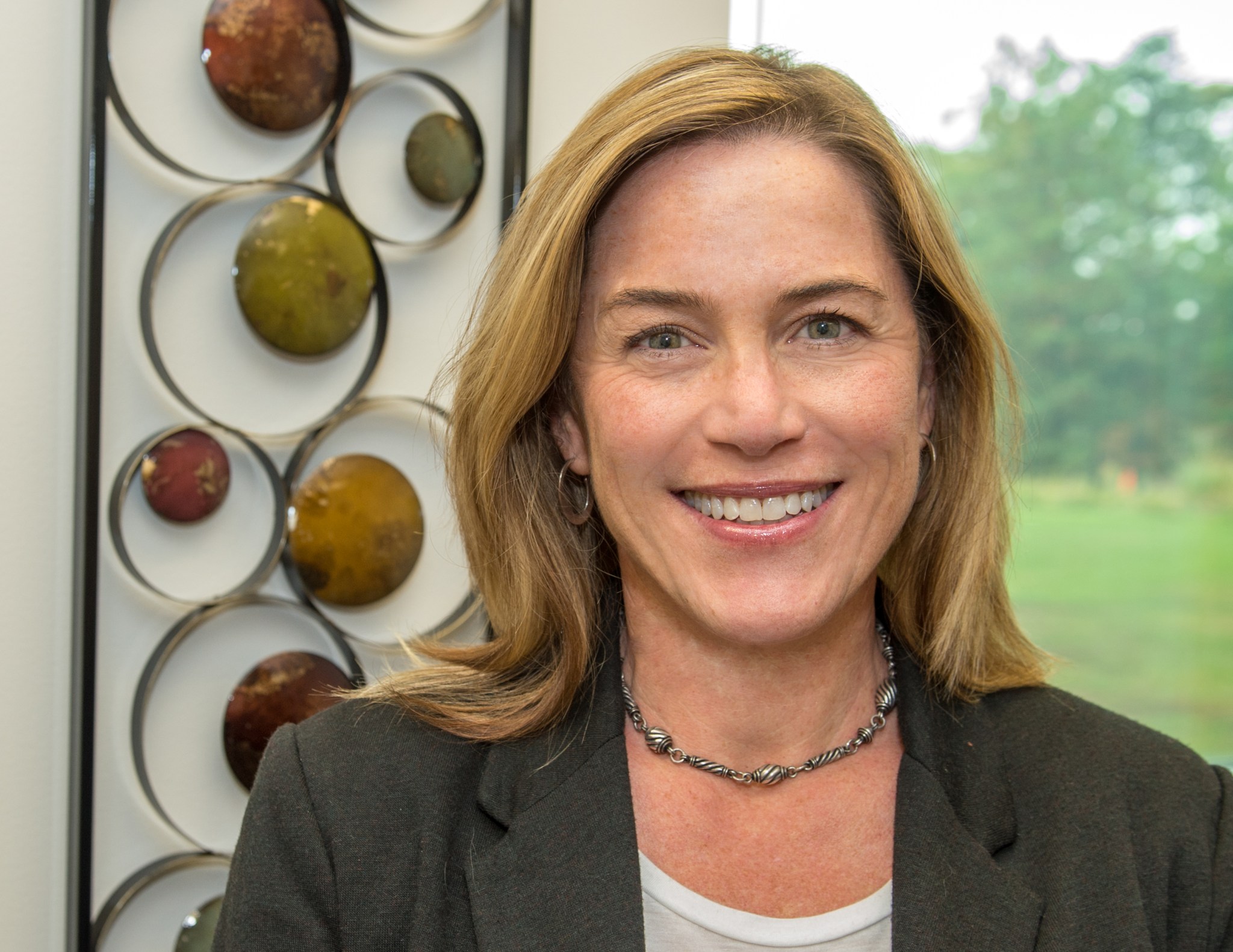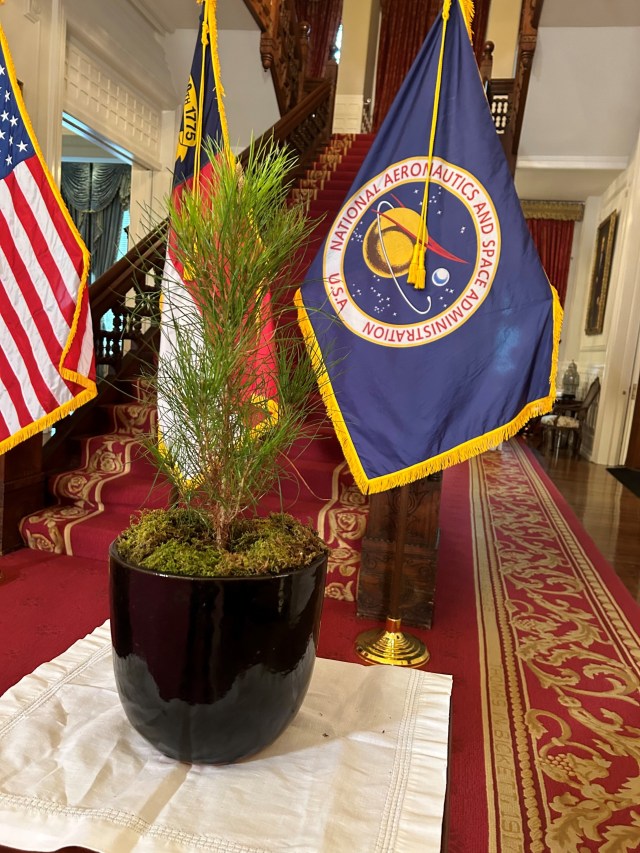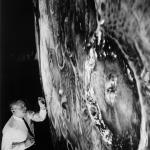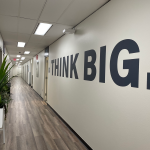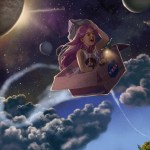Name: Lisa Callahan
Title: Associate Director, Mission Planning and Technology Development, Earth Sciences Division
Formal Job Classification: Aerospace Engineer
Organization: Code 610, Earth Sciences Division, Sciences Directorate
Innovator and engineer Lisa Callahan strives for “unobtainium.”
What do you do and what is most interesting about your role here at Goddard? How do you help support Goddard’s mission?
I work with Goddard’s Earth science community to formulate mission concepts that address high-priority science measurements. I also work with the engineering community to develop new instrument concepts, make existing measurements better or take measurements in novel ways to produce different results.
Basically, I bring the science and engineering groups together to develop new missions. I connect the dots between what data the scientists want and how the engineers can build the instruments to provide that data. I facilitate that creative process although I don’t consider myself creative. I’m more of a mediator of sorts. Everything is 100-percent driven by science.
What helps you to be innovative?
I am a life-long learner. I learn something new on the job almost every day. I talk to my colleagues, ask questions and reach out to experts who can help us solve new problems. I came from Goddard’s technology and development program, so I bring a lot of that knowledge to my current position, which I’ve held for four years.
How do you help others be innovative?
I help them fully describe what they are trying to accomplish. I do this by asking the right questions and enough questions to break it down to the root of what they want. It’s a question of spending enough time with everyone. Then, I bring in the right engineering experts and ask them to come up with innovative ways to address the problem. I also seek partners outside Goddard who have unique capabilities that may help to catalyze the innovation process.
How do you sift through all the ideas?
It’s a long-term process. It’s a pipeline. I want as many ideas as possible in the pipeline at various stages of maturity. Some ideas need longer to come to fruition. Some ideas may not be mature today, but I want to hear about the idea because, perhaps with a little money or some engineering support, that idea may, in five years, be ready for a proposal as a game changing concept.
A lot of ideas do not pan out, but the process of reviewing and understanding them helps drive more new ideas and further innovation. There is almost nothing I say no to! There is almost always a way to keep an idea moving forward if the science behind it is valid. Ideas may change over time depending on what comes out of the effort invested. An idea that is not realizable today may, over time, become the next best thing. We just might not know how to do it yet.
My science colleagues are inspiring both in terms of the science research they do on a daily basis and their vision of the future. In support of this great science, our engineers can make almost anything short of “unobtainium” happen. “Unobtainium” is an inside joke describing how engineers feel about some challenging science requirements and refers to a nonexistent element on the periodic table of elements.
What are your most important qualities that help you to inspire others?
I believe in the people I work with and the NASA mission. I also believe in giving practical advice, meaning that I focus on attainable goals and I try to provide concrete objectives that can be used to measure progress.
Why did you choose your profession?
I’m an aerospace engineer. I’ve always wanted to work for NASA. I have an affinity for math and physics which led me to aerospace engineering. I went to the University of Michigan for a Bachelor of Science in aerospace engineering and went to George Washington University for a master’s in science, technology and public policy. I also have a teaching degree in secondary mathematics education from Trinity College.
Why did you come to work at Goddard?
I came to Goddard in 1988 to work as a propulsion engineer. As a result of getting my master’s degree, I worked at NASA Headquarters in various positions for six years. In 1996, I returned to Goddard as the program manager for the cross-cutting technology program that evolved into Goddard’s internal research and development program. I took a leave of absence in 1999 to teach high school math at Richard Montgomery High School. After that year, I returned to my prior position at Goddard.
What makes you stay at Goddard?
I stay because I really love the NASA mission. I love the science we do and being part of that process of discovery.
Why did you take a year-long, leave of absence to teach?
Mathematics is the common denominator for everything that we do, for both the science and the engineering work. I wanted to make math relevant to high school students, to inspire them to learn the “language” of mathematics. If we can make math relevant, then we can reach the students and motivate them to continue studying math. Maybe some of them will, in time, seek careers with Goddard.
To me, math is elegant in that it can describe physical phenomenon. The combination of being able to mathematically describe something and use it to solve problems is something I love to do. I wanted to share this with a new generation of students.
What is the coolest thing you’ve ever done as part of your job at Goddard?
I really like building things. I was able to work on a prototype laser altimeter instrument for Ice, Cloud, and land Elevation Satellite-2 called Multiple Altimeter Beam Experimental Lidar. It was a thrill to be there when MABEL first flew and returned data.
What lessons or words of wisdom would you pass along to somebody just starting their career at Goddard?
Never give up! Stick with what you believe in and follow through! There is a method to the creative process. While every outcome is not guaranteed, you can increase the chances of your success.
Is there something surprising about you, your hobbies, interests or activities outside of work that people do not generally know?
I was a competitive figure skater from 1990 to 2004. I skated on a national level. I even went to Adult Nationals. I stopped competitive figure skating after I had my third child, two daughters and a son. One of my daughters now plays hockey, and I help coach skating skills. I love skating with her team!
Do you have a favorite book, magazine, movie or TV show?
I don’t watch TV, but I read a lot. I always have a book to read. One of my favorite authors is Barbara Kingsolver. I don’t have a favorite genre. I will read anything.
By Elizabeth M. Jarrell
NASA’s Goddard Space Flight Center, Greenbelt, Md.

Conversations With Goddard is a collection of Q&A profiles highlighting the breadth and depth of NASA’s Goddard Space Flight Center’s talented and diverse workforce. The Conversations have been published twice a month on average since May 2011. Read past editions on Goddard’s “Our People” webpage.





























